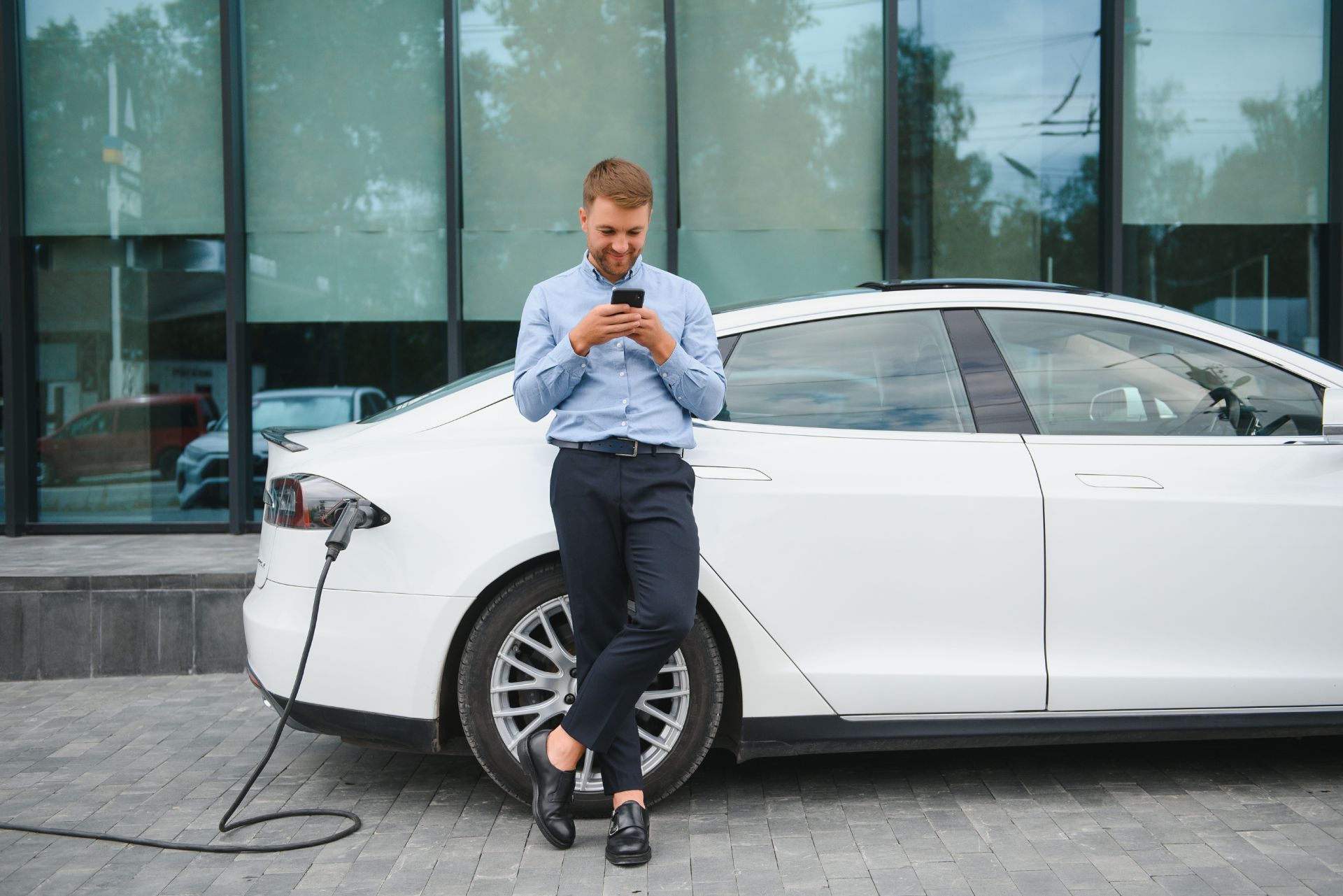
Most Common Personal Policies
Index
Contact Us
Owning a Tesla Model S offers a blend of luxury, performance, and cutting-edge electric vehicle technology. However, when it comes to insuring this premium electric sedan, many owners and prospective buyers face unique challenges. Insurance premiums for Tesla vehicles, particularly the Model S, have been rising steadily due to higher repair costs, increased claim frequencies, and other factors. This article dives deep into everything you need to know about Tesla Model S insurance, from why premiums are climbing to what drivers can expect in terms of costs and coverage.
Why Tesla Model S Insurance Premiums Are Rising
One of the most pressing concerns for Tesla Model S owners is the rapid increase in insurance premiums. Unlike traditional gasoline-powered vehicles, Teslas have a reputation for higher repair expenses. According to Insurify, Tesla vehicles cost, on average, $1,347 more to repair than their gasoline counterparts. This significant difference is largely due to the complexity of Tesla’s electric powertrain, specialized parts, and the need for certified repair facilities.
Additionally, the Tesla Model S has been noted to have higher insurance claim frequencies compared to other electric and gasoline vehicles. Data from the Insurance Institute for Highway Safety (IIHS) and Highway Loss Data Institute (HLDI) highlights that Model S drivers file claims more often, which naturally drives premiums upward as insurers adjust for the increased risk.
Another factor contributing to rising premiums is the surge in vandalism and repair costs. Tesla insurance premiums for the Model S have been increasing at twice the market rate, reflecting insurers’ efforts to offset these growing expenses. This trend is not isolated; the Model Y, Tesla’s other popular model, also saw a 29% year-over-year increase in insurance premiums, averaging nearly $4,000 annually, as reported by Insurify.
Furthermore, the advanced technology integrated into the Tesla Model S, such as its Autopilot and Full Self-Driving capabilities, while innovative, can also contribute to higher insurance costs. These features require specialized training for repair technicians, and any incidents involving these systems can lead to complex claims processes. Insurers often consider the potential for more expensive claims when setting premiums, as the cost of repairs can escalate quickly when advanced technology is involved.
Moreover, the growing popularity of electric vehicles (EVs) has led to a competitive market, where insurance companies are still trying to understand the unique risks associated with these vehicles. As more drivers transition to EVs, insurers are gathering data, but the current lack of comprehensive historical data on electric vehicle claims means that they may err on the side of caution, leading to higher premiums for Tesla owners. This uncertainty in risk assessment further compounds the issue, as companies adjust their pricing models to account for the evolving landscape of automobile insurance.

Understanding Tesla’s Insurance Loss Ratio and Its Impact
Tesla’s approach to insurance is unique as the company offers its own insurance products in select markets. However, this venture has faced financial challenges. In 2023, Tesla Insurance reported a loss ratio of 92.5%, meaning the company paid out 92.5 cents in claims for every dollar collected in premiums. This high loss ratio indicates that Tesla’s insurance products are currently unsustainable, which may lead to further premium increases or adjustments in coverage options.
The high loss ratio is a reflection of the costly repairs and frequent claims associated with Tesla vehicles, particularly the Model S. Repairing Teslas often requires specialized parts and labor, which can be more expensive than traditional vehicles. This financial strain on Tesla’s insurance division is further complicated by a proposed consumer class action lawsuit in California. The lawsuit alleges systematic delays and minimization of insurance payouts, which could impact Tesla’s insurance operations and customer satisfaction moving forward. More details on this legal challenge can be found via Reuters.
Moreover, the intricacies of Tesla’s insurance model stem from its deep integration with the company’s technology and data capabilities. Tesla leverages real-time data from its vehicles to assess risk and set premiums, a strategy that is both innovative and risky. While this data-driven approach can potentially lead to more accurate pricing, it also raises concerns about privacy and the ethical implications of using such detailed information for underwriting. As Tesla continues to refine its insurance offerings, it must navigate these complexities while ensuring that its customers feel secure and valued.
In addition to the challenges posed by high loss ratios and legal disputes, Tesla’s insurance division faces stiff competition from traditional insurers who have established reputations and extensive experience in the market. These competitors often have more robust frameworks for managing claims and customer service, which can put Tesla at a disadvantage. As Tesla seeks to carve out its niche in the insurance landscape, it will need to enhance its operational efficiencies and customer engagement strategies to build trust and loyalty among its policyholders.
How Tesla Model S Insurance Costs Compare to Other Vehicles
When comparing insurance costs, electric vehicles (EVs) as a whole tend to be more expensive to insure than gasoline-powered cars. On average, EVs cost 49% more to insure, with annual premiums around $4,058 compared to $2,732 for traditional vehicles, according to Insurify. The Tesla Model S, being a luxury EV with advanced technology, sits on the higher end of this spectrum.
Specifically, Model S drivers not only face higher premiums but also experience more frequent insurance claims. This combination of higher claim frequency and repair costs contributes to the elevated insurance rates. For example, the Model Y had the highest insurance claim frequency among electric vehicles in 2024, with a rate of 31.43%, as reported by Mitchell International. While the Model S’s exact claim frequency is not specified, it is known to be similarly high, reflecting the challenges insurers face with Tesla vehicles.
These factors culminate in insurance premiums that can be significantly higher than average, making it essential for Model S owners to shop around and consider Tesla’s own insurance offerings where available, which may provide more competitive rates due to Tesla’s intimate knowledge of its vehicles.
Moreover, the advanced technology integrated into the Tesla Model S, such as its Autopilot features and sophisticated safety systems, can also influence insurance costs. While these features are designed to enhance safety and reduce the likelihood of accidents, they can lead to higher repair costs when incidents do occur. For instance, the specialized parts and labor required for repairs on a Tesla can be significantly more expensive than those for conventional vehicles. This reality is compounded by the fact that not all repair shops are equipped to handle EVs, potentially leading to longer wait times and higher costs for parts.
Additionally, the Model S is often a target for theft due to its high value and desirability. Insurance companies take this into account when determining premiums, as vehicles with higher theft rates typically incur higher insurance costs. The combination of these factors—higher repair costs, advanced technology, and theft risk—creates a unique landscape for Tesla Model S insurance that potential buyers should thoroughly investigate before making a purchase decision. Understanding these nuances can empower owners to make informed choices about their insurance coverage and potentially save on premiums in the long run.
Factors Influencing Tesla Model S Insurance Premiums
Several factors influence the insurance premiums for Tesla Model S owners beyond the inherent repair costs and claim frequencies. Location plays a critical role; areas with higher rates of vandalism or accidents will naturally see higher premiums. Tesla’s advanced technology, including autopilot features, also affects premiums. While some insurers offer discounts for vehicles equipped with advanced safety features, the complexity and cost of repairing these systems can offset those savings. Additionally, the availability of specialized repair shops for Tesla vehicles can further complicate the cost of repairs, as not all mechanics are trained to handle the unique components of electric vehicles.
Driver behavior and history remain key determinants of insurance costs. Tesla Model S drivers with clean records and lower mileage may benefit from reduced premiums. However, given that Tesla vehicles often attract tech-savvy and performance-oriented drivers, insurers may price policies accordingly to account for risk. Furthermore, the driving patterns of Tesla owners, such as frequent use of the vehicle's high-performance capabilities or reliance on autopilot features, can also influence risk assessments. Insurers may analyze data from telematics devices to better understand driving habits, which can lead to more personalized premium calculations.
Another consideration is the availability of Tesla’s own insurance product, which is currently offered in select states. Tesla Insurance aims to provide more affordable and tailored coverage by leveraging real-time vehicle data and repair cost insights. However, as mentioned earlier, Tesla’s insurance division is facing financial sustainability challenges, which could impact future pricing and availability. The company's approach to insurance is innovative, as it seeks to disrupt traditional insurance models by using proprietary data to assess risk more accurately. This could lead to a shift in how insurance is priced across the industry, especially for electric vehicles, as more companies begin to adopt similar strategies.
Moreover, the impact of electric vehicle incentives and tax credits cannot be overlooked. In some regions, government programs aimed at promoting electric vehicle adoption may influence insurance premiums indirectly. For instance, if a state offers substantial rebates or tax breaks for electric vehicle owners, this could lead to an increase in the number of Tesla Model S vehicles on the road, subsequently affecting the overall risk pool and potentially leading to lower premiums over time. Additionally, as the market for electric vehicles continues to grow, insurers may develop new models and algorithms specifically designed to cater to this segment, further influencing the dynamics of insurance pricing for Tesla owners.

Tips for Reducing Tesla Model S Insurance Costs
Despite the higher baseline premiums, there are strategies Tesla Model S owners can use to manage insurance costs effectively:
- Shop Around: Comparing quotes from multiple insurers can uncover competitive rates. Some companies specialize in insuring electric vehicles and may offer better pricing.
- Consider Tesla Insurance: Where available, Tesla’s own insurance product may provide cost advantages due to its deep understanding of Tesla vehicles and repair processes.
- Maintain a Clean Driving Record: Safe driving habits and low mileage can help reduce premiums over time.
- Leverage Safety Features: Ensure that your insurer recognizes the safety technologies in your Model S, which can sometimes qualify you for discounts.
- Increase Deductibles: Opting for a higher deductible can lower monthly premiums, though it means more out-of-pocket costs in the event of a claim.
By applying these tips, Tesla Model S owners can better navigate the insurance landscape and potentially save on premiums without sacrificing coverage quality. Additionally, it’s beneficial to stay informed about any changes in insurance regulations or incentives for electric vehicles, as these can impact overall costs. For instance, some states offer tax credits or rebates for electric vehicle owners, which can indirectly affect insurance rates by promoting safer driving practices and lower accident rates among electric vehicle users.
Furthermore, participating in telematics programs offered by some insurers can lead to additional savings. These programs monitor driving behavior through a mobile app or device, rewarding safe driving habits with lower premiums. Tesla Model S owners, known for their tech-savvy approach, may find these programs appealing, as they not only help in reducing costs but also encourage responsible driving. By taking advantage of these options, Tesla owners can create a comprehensive strategy to manage their insurance expenses effectively while enjoying the benefits of their electric vehicle.
The Future of Tesla Model S Insurance
The insurance market for Tesla Model S vehicles is evolving rapidly. As repair technologies improve and Tesla expands its insurance offerings, there may be opportunities for more affordable and tailored insurance products. However, the current high loss ratios and legal challenges suggest that insurers and Tesla alike must address the underlying cost drivers to achieve sustainable pricing.
Innovations such as real-time driving data, enhanced autopilot systems, and improved repair techniques could help reduce claim frequencies and costs in the future. Meanwhile, Tesla’s commitment to its insurance business indicates a long-term strategy to integrate vehicle ownership and insurance more seamlessly. This integration could pave the way for usage-based insurance models, where premiums are directly correlated to driving behavior, potentially rewarding safe drivers with lower rates.
For now, Tesla Model S owners should stay informed about insurance trends, understand the factors influencing their premiums, and consider all available options to secure the best coverage at a reasonable cost. Additionally, as electric vehicles become more mainstream, the insurance industry may see a shift in how risk is assessed, particularly with regard to the unique features of EVs, such as battery life and charging infrastructure. This could lead to a more nuanced understanding of risk that benefits Tesla owners.
For more detailed insights into Tesla’s insurance challenges and premium trends, readers can explore reports from
Electrek and
Insurance Business America. Furthermore, as Tesla continues to innovate, the interplay between autonomous driving technology and insurance will become increasingly crucial. Insurers may need to adapt their models to account for the reduced risk associated with fully autonomous vehicles, which could reshape the entire landscape of auto insurance in the coming years


